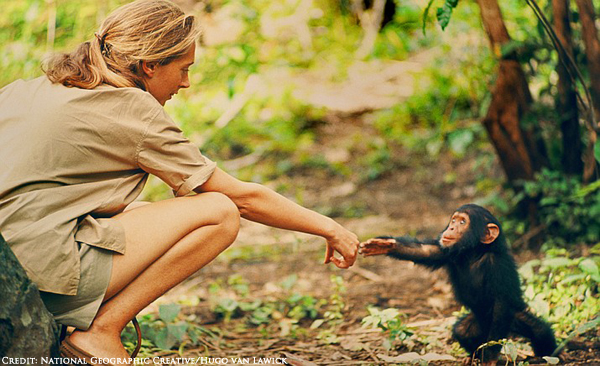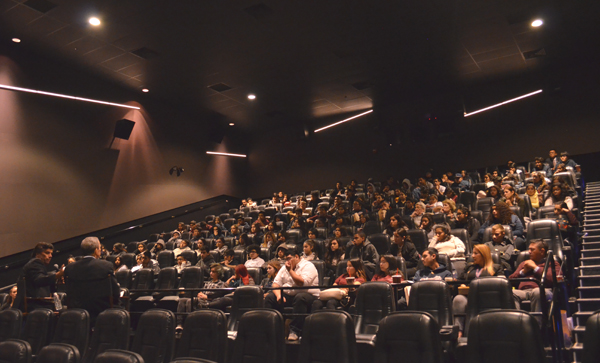
Credit: National Geographic Creative/Hugo van Lawick
LAWAC held a screening for some 250 high school students of the recent documentary Jane about the life of the chimpanzee researcher Jane Goodall on January 17th. Goodall was just 26 and had no scientific training when she headed into the jungles of Tanzania in 1960 to get close to chimpanzees and record their behavior. But her observations over the years she spent in Gombe, western Tanzania revolutionized our views of chimps from the old idea of gentle, fun-loving vegetarian apes.
The documentary, made by filmmaker Brett Morgen using many hours of unseen archival film from National Geographic, shows how the young Goodall – accompanied by her mother for her “safety” – set up camp near a large troupe of chimpanzees in the forest, and then waited for months before the chimps finally grew accustomed to her and allowed her to interact with them. To bring the chimps in closer, Goodall began feeding them bananas near her camp, a tactic that has since been criticized as interfering with their natural behavior. Nonetheless, Goodall became trusted enough by the chimpanzees that she could watch them up close as they groom, pet and even kiss each other as they socialized. “Staring into the eyes of a chimp, I saw a thinking, reasoning personality staring back,” she wrote in her notebook. “The more I learned, the more I realized how like us they were, in so many ways.”
Her first big discovery was to witness the use of tools – chimps using long thin sticks as skewers, inserted into termite mounds and withdrawn with termites impaled on them, which the chimps could then eat. She even saw them sharpening the twigs to improve their effectiveness. Suddenly “Man the Tool Maker” had to make way for some company.
But even more shocking to biologists and to the world at large was her observation of the brutality that chimpanzees routinely exercised. At one point, the troupe of chimpanzees she had been observing split in two and then one group attacked the other group and systematically killed every one of them. “It was a very dark time,” said Goodall. “I thought they were like us but nicer – I had no idea of the brutality they were capable of.”

Students listen to Craig Stanford, of the Jane Goodall Institute, talk about the film and what it's like to work with Jane.
“When Jane published this, no one initially believed it,” said Craig Stanford, who is a professor of Biological Sciences and Anthropology at USC and head of their Jane Goodall Institute. Speaking at the Q&A after the screening, Stanford said that the experts in the field in the 1970’s dismissed Goodall’s accounts of chimps committing genocide and cannibalism, which they said was aberrant behavior caused by Goodall’s own presence. “But now we know it is true, and such behavior has been observed elsewhere.”
Stanford has worked closely with Goodall, and said that in the 1980’s she had an epiphany and her mission shifted from researching chimpanzees in the wild to trying to protect the wild itself. Realizing that the wild forests where the chimpanzees lived were being encroached upon by humans, “She put her energy into working for animal welfare, the health of the planet and environmental education.”
When asked by a high school student about how one could get a job in the field of chimpanzees and conservation, Stanford said “just write letters to researchers you admire.” That is what he did three decades ago when he wrote to Jane Goodall and a number of other top researchers asking to work with them – and Goodall wrote back inviting him to come for an interview.
